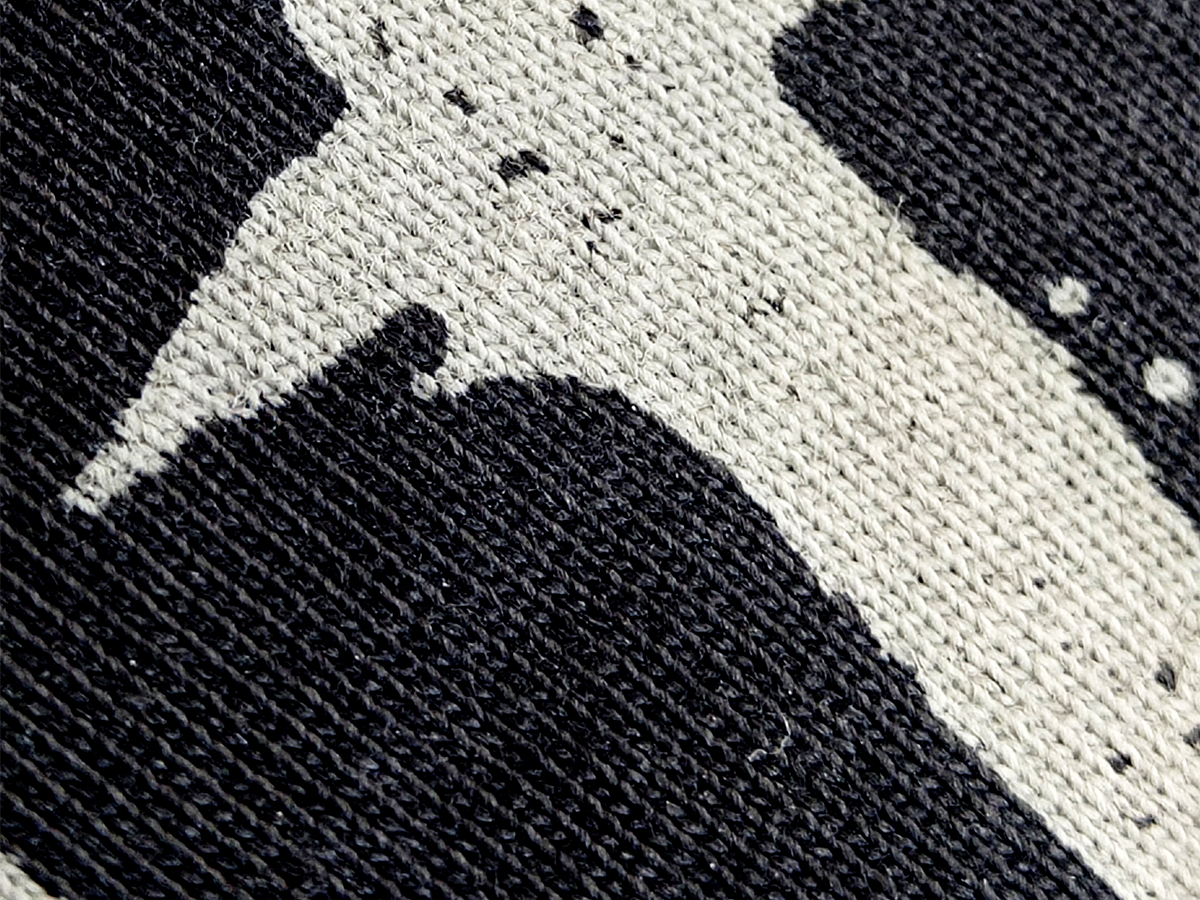Screen printing is one of the most popular methods for decorating textiles. It is perfectly suited for mass production in a short time, and thanks to technological progress and a wide selection of inks with various properties, it has gained great versatility.
One of the exceptional screen printing techniques is the so-called discharge. What exactly is this method and why is it considered so special? You can read about it below.

What is discharge?
Discharge is a technique using water-based inks, ideal for printing on dark fabrics, especially organic cotton. It allows achieving intense colors without the need to use a white base.
However, it is a very "capricious" technique – it requires experience and caution because the final effect can vary depending on many factors. For example:
If the garment is made of a cotton and synthetic blend, the final print color may differ significantly.
Differences can also arise from the color the fabric was dyed or even from the batch the material comes from.
For this reason, we recommend using clothing from trusted manufacturers, such as Stanley/Stella – this way we can be sure that the material is 100% cotton.
Despite the risk, it is worth trying discharge – the effects are spectacular: we get an almost indestructible, matte print that draws attention.
How does it work?
Why does discharge require such precision and caution?
Unlike traditional inks, discharge deeply penetrates the fibers of the material. Under the influence of high temperature, a chemical reaction occurs, bleaching the dark fabric and restoring its original color – usually beige or white.
By adding pigment, we can give the material a completely new color, e.g. red. This process is similar to the action of a solvent, but discharge does not damage the fabric.
Key factors are:
appropriate temperature,
pressure,
proportions of ingredients.
All technical details (including formulas) are best consulted with the ink manufacturer. We also recommend performing tests on material as close as possible to the client's final product.
Advantages of discharge
Intense colors on dark clothing without the need for a base layer.
The print is imperceptible to the touch – it feels like an integral part of the material.
Exceptional durability – print resistant to washing, abrasion, and weather conditions.
Matte finish – works perfectly in vintage styles, on band clothing, etc.
Appreciated in premium clothing production.
Characteristic effect – immediately attracts attention and is hard to confuse with other techniques.
Disadvantages of discharge
Can only be used on natural materials – even a small synthetic blend can affect the final color.
The final effect is visible only at the last stage of production.
The technique is unpredictable – requires many trials and tests.
The ready ink has a short shelf life.
The process requires very good ventilation due to the presence of chemical compounds.
A brief history of discharge
Discharge is not new – this technique dates back to the Middle Ages, like many other screen printing methods.
The first traces of discharge use can be found in India, China, and Japan – regions with easy access to the natural dye indigo.
A discharge paste was applied to indigo-dyed fabric. After washing and drying, the fabric oxidized, revealing its original color (usually beige, less often white). This technique was used for decorating kimonos and Indian robes among others.
The centuries-long development of this technology was accelerated by the English poet and enthusiast of traditional decorating techniques – William Morris. Thanks to his work, the technique was improved and popularized.
Summary
Discharge is undoubtedly one of the most demanding screen printing techniques. It does not forgive mistakes – but in the hands of experienced printers, it can work wonders. It is capricious but delivers effects that impress with durability and aesthetics.
We invite you to contact our company – we will help select the right clothing and arrange all details to achieve the highest print quality using the discharge technique together.

